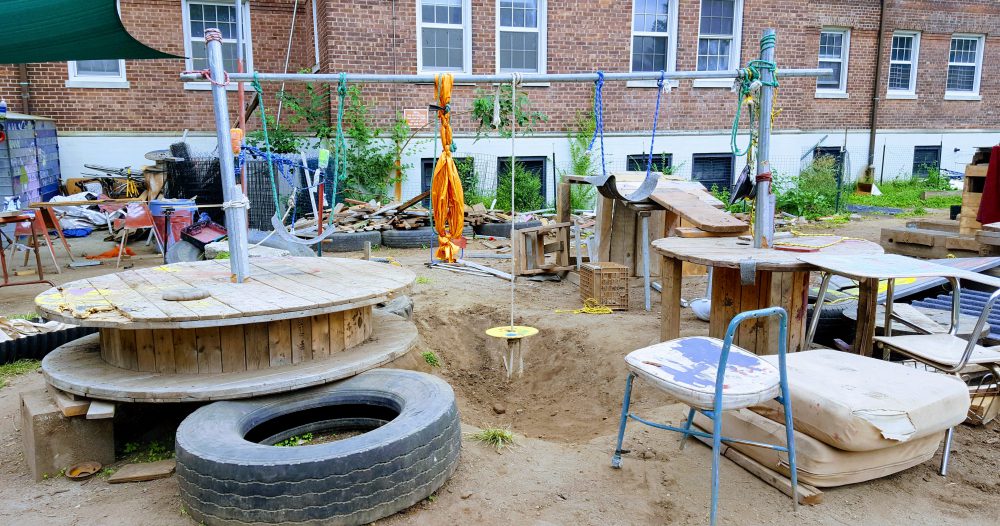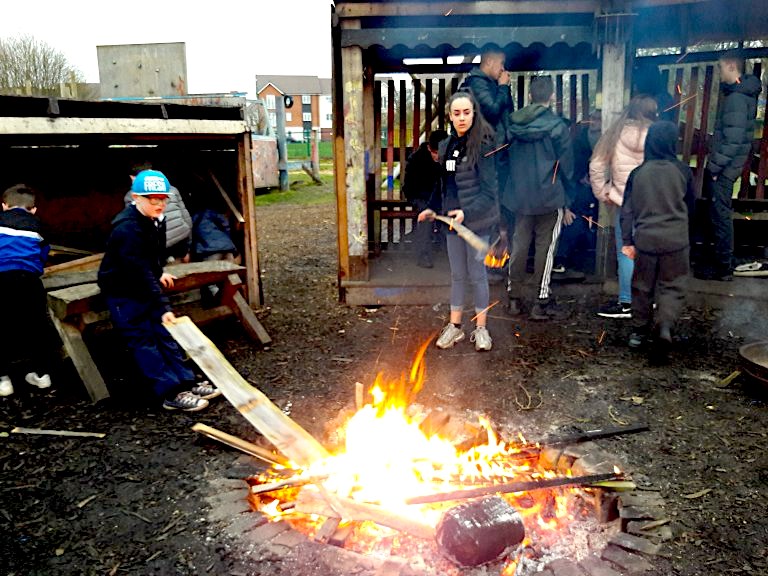Although there is no specific image or definition of free play, one of its main features is that it is performed spontaneously by children, not in a programmed manner pre-determined by adults. This does not mean it is chaotic, but it does mean: even if a play has its rules, they have a nature that takes shape with the initiatives of the participants and their contributions, and transforms as the play evolves. The role of the tools included in the play can also be highly variable as it is determined in this dynamic process; it is not possible to determine in advance. One of the greatest richnesses that play brings to human life is that it does not fit in a certain pattern and does not have to follow a predetermined route. We liberate ourselves by letting the materials in our hands and the possibilities of the ideas in our minds write stories endlessly and infinitely.
It seems to be simple to realize the liberating power of play; but as adults, we often put play in the background, and we use our skills and imagination not to free us but to blind our freedom. Free, fun and spontaneous structures of play have been placed in the second plan, with the consumption-focused activities that have focused on increasing profitability and efficiency over time and space, especially in recent years. Play is turned into an intermediary for the works that we aim to get its concrete outputs immediately. Game facilities in theme/amusement parks and sometimes in shopping malls; its guidelines, especially in the presence of digital technology, are very structured. We constantly provide space and material for this kind of new ‘play’ culture. In this way, we became people who are waiting for instructions even on how to breathe on the screens. This means a very rapid change and transformation in the lives of children, who are now growing with digital technology.
The role of adults in play: being a mediator
If we look at the environment of children’s play we can see the significant effect of adults, especially parents, teachers, caregivers. Not only by providing structured materials and building structured play environments for children; we directly affect children’s access to their environment and the way they relate to the environment. It is us who bring children to standard playgrounds, often tell them where and how to play, down to the smallest detail. So, how can we use the power we have to support children to play freely as much as they can, without restricting their imagination?

In fact, there is a group of people trying to fulfill this function: playworkers. [1] The basis of the philosophy of playwork is a radical view that aims to free children from the oppressive and restrictive structures of adults by giving them the opportunity to create their own world through play. Playworkers create an environment in which children can play according to their choices. During play, it provides contributions such as providing the materials that appear to be missing by trying to read the needs of the children without having to directly interfere with play, but being in the place and observing play processes. Playworkers try to understand and support play rather than transferring information to children and directing them according to certain instructions.
In a chapter in the book “The Foundations of Playwork’’ (2008), Ben Tawil shares what he remembers from some of his days as a playworker. [2] In an after-school program where he spends time with children, one day a local furniture company calls him and asks if he wants old furniture for the playground. Tawil agrees that this will provide a good raw material for a play idea. About 7 children between the ages of 8-12 on his team watch the truck full of furniture arriving on the playground with curiosity and start exploring its contents in a short time. Tawil tells how they carried the furniture with the children in the ‘castle’ that they had built in the playground, how they distribute the tasks and what kind of games are part of the furniture after the transportation process is successful. As an indicator of socio-dramatic play, children pretend they are interior designers as they carry and position the furniture and after they settle they pretend that they are members of a family living in the ‘castle’. This game continues for two weeks, with different children involved at different times of the day and week. At the end of the two weeks, children lose interest in this play and they start to throw the pieces of the furniture into the nightly campfire.

Furniture is disappearing; however, play is just changing its form. According to Tawil, the only thing that is fully retained is the value of the experiences. This example also demonstrates the role of a playworker, but also reveals the free and emancipatory cycle of play and its incompatible nature. Play may not be easy to understand, but it’s up to us to support!
References
[1] Minesis Dergi, Oyun Konferansından İzlenimler
[2] Tawil, B. (2008) Two weeks of adventure play: moving furniture, in Foundations of Playwork, Open University Press: Berkshire
Photos

One comment
Gizem
29 June 2020 at 17:22
Min intervention!